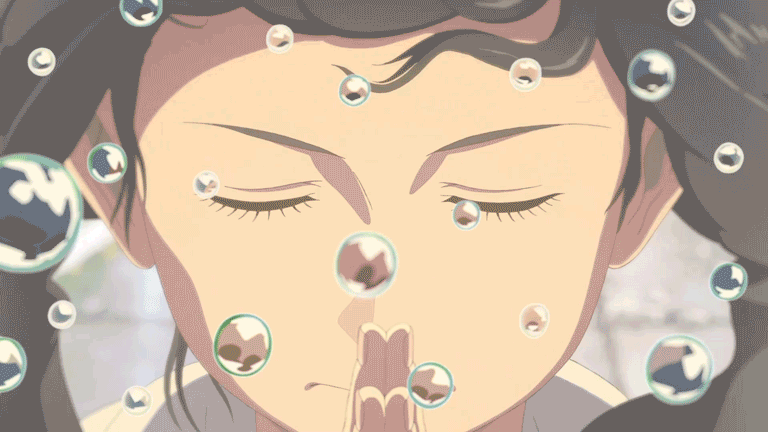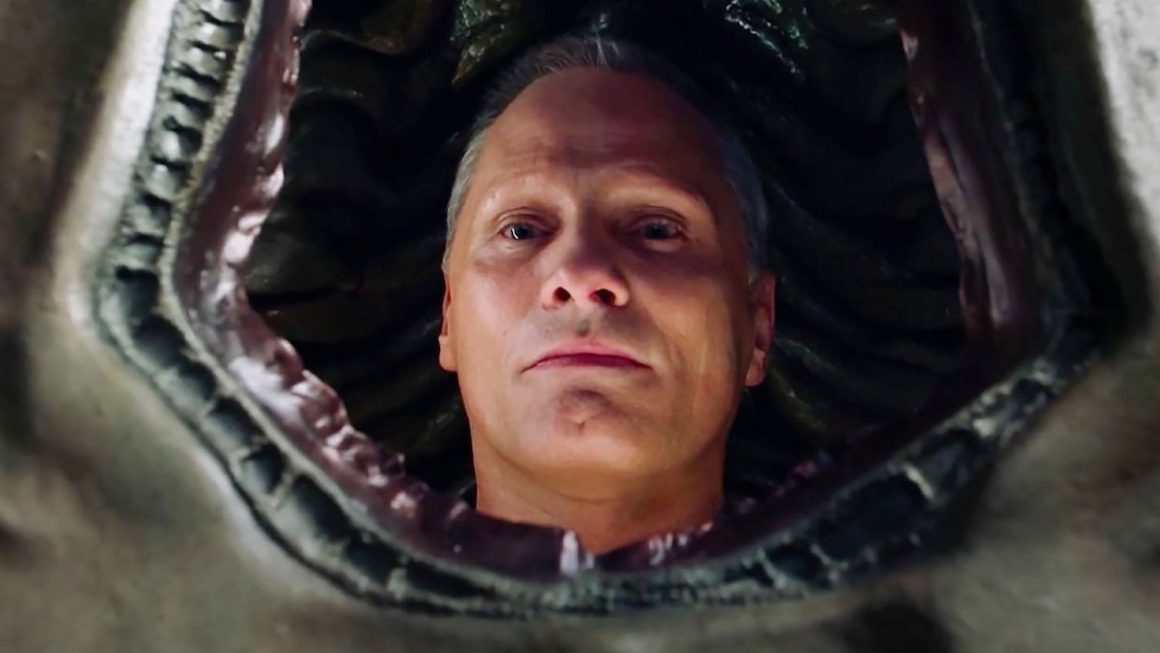Who among us isn’t guilty of at least thinking about running away from home? Weathering With You tells the story of a fifteen year old boy named Hodaka (Kotaro Daigo), who actually does it. He’s had enough of his parents and of high school, so he boards a boat and sets his sights on rainy Tokyo.
Hodaka embraces the oncoming storm aboard the ship, and nearly loses his life to a downpour and an ocean swell. Thankfully, Keisuke Suga (Shun Oguri) is there to scoop him up from the deck before he slides clear off the boat. His first friend, he just doesn’t know it yet.
Living in Tokyo is hard. Hodaka will be the first to tell you that. He’s a lost soul, floating about, sleeping in someone’s foyer attempting to stay dry and quickly running out of money. Finally he’s forced to seek out Keisuke’s office, where he’s given a job as an assistant and writer for an occult magazine. This is where he’s introduced to the concept of a “sunshine girl,” and various other oddities for that matter.
That’s just the beginning of his journey.

A Brilliantly Original Concept Considers Japanese Myth and Climate Change
Writer and director Makoto Shinkai has given us a timely fantasy masterpiece, energized with one of the most original concepts I’ve ever experienced in animation.
He balances Japanese folklore and the looming threat of climate change with a heartbreaking narrative containing beautiful innocent characters that are willing to go to great lengths to protect one another at any expense.
It gives me a sense of hope.
Hodaka quickly meets Hina (Nana Mori), a selfless real life “sunshine girl.” She possesses a once in a generation power to part the rain clouds and literally flood her environs with warmth and sunshine on a prayer. Hodaka is smitten and has an idea!
He, Hina, and her hilarious little brother Nagi (Kiryu Sakura) start a little business selling sunshine to people for everything from farmer’s markets, to weddings, to play dates in the park. Their money problems are solved and their friendships deepen.
All of Shinkai’s characters are orphaned in one way or another. Hodaka is a runaway, Hina and her brother Nagi’s mother died (no father in sight), even Keisuke lost his wife in an accident and custody of his daughter to her grandmother. So, when they find each other, they form a sort of family, looking out for each other, loving each other.
If there’s anything I’ve figured out by now, it’s that you really need a support system of some kind when you move somewhere new, or take on the unknown. They made that for themselves, by being in each other’s lives.
The world of Weathering With You is reality layered with fantasy. In the film, Tokyo looks very much like Tokyo.
Shinkai adds layers of fantasy inspired by folklore, depicting whole worlds in the clouds with serene grassy tops, even suggesting the clouds are as large and unexplored as the oceans – and they are in this film.

Translucent fish, big and small, fall to Tokyo’s streets, and serve as our first hint that there really is a mystical sort of balance between earth and sky. Things unknown and a forgotten past. This suggests something rather profound that I find to be true about human beings.
Take recent archeological findings for instance, and the discovery of Göbekli Tepe in Turkey – this sight totally predates what archeologists thought our own ancestors were capable of at the time, and there’s no explanation for it.
Theories aplenty, the fact is we forgot our own past. Shinkai explores that idea in relation to “abnormal” weather, about how quickly we forget that the Earth is on a different time scale than our records are able to acknowledge. Except in this film, mysticism is to blame. Mysticism that people still forget.
Natsumi Suga (Tsubasa Honda), Keisuke’s niece, and Keisuke go on an interview for the occult magazine and learn about weather maidens (a.k.a sunshine girls) and their destiny of self-sacrifice.
The old man there says something important – he derides the news for saying this much rain is unprecedented in all of recorded history, reassuring Natsumi and Keisuke that the history of weather stretches back further than a hundred years. He claims the mural painted above them of a cloud dwelling dragon and fish is eight hundred years old.
Shinkai explores a world of his own creation, where the impossible is possible, where the will of human civilizations on the planet are made into tangible fantasy, and the results are stunning. He successfully connects a character driven story with the fate of the Earth.

Martyrdom and Falling in Love with a Sunshine Girl
Hodaka is finally ready to admit to Hina on her birthday that he loves her. At this point in the film, the three orphans have escaped the threat of the police and child services and finally found a hotel willing to rent them a room.
We are lured into a false sense of security which heightens our emotional reaction when Hina sacrifices herself for the greater good of Tokyo.
At least for a night, we enjoy the time they have together. They bathe, eat a big colorful dinner, and dance on the bed while singing karaoke. Hodaka admits he wants nothing more and nothing less. I’d have to agree with him.
Hina asks Hodaka if he would be happy if it stopped raining for good, and he says yes, inadvertently giving her permission to succumb to her fate. A sly move.
Hina reveals to Hodaka that she is disappearing, that the more she uses her powers, the more her flesh turns to water, and soon she’ll disappear for good – and, in the night, she does.

The boys wake covered in sweat to find Hina’s robes empty, the police banging down the door, and the sun shining bright.
Hodaka’s last bid to return his love Hina to Earth from the clouds, in total disregard for the consequences, fashioned with guilt for getting her into this mess, illustrates a fascinating point about the balance between individualism and the greater good.
Hina is terribly sad to lose her brother Nagi and love Hodaka, but she accepts her fate as this generation’s sunshine girl, she sacrifices herself to save Tokyo from itself.
But, Hodaka refuses to accept this outcome and defies the “greater good” cultural paradigm.
He escapes from police custody, runs to the roof of the abandoned building where the shrine that gave Hina her sunshine girl powers in the first place lies, and after an encounter with Keisuke and the police, runs through the torii of the shrine and is transported into the heavens.

Here, Hodaka is reunited with Hina. They begin to fall back to Earth, and as they do, Hodaka says something rather interesting. He tells her she needs to live for herself, and that he’d be okay having a sky full of clouds if it meant having her in his life.
According to Shinkai, this sentiment proved to be a little controversial among some audiences. Isn’t it wrong to only do for oneself? Shouldn’t the greater good always be considered? Perhaps not. Perhaps love can take precedent.
Life isn’t so well defined, there has to be room for all of the grey parts, for all of the unknown.
As if to drive this point home, three years later, after Hodaka finishes probation and high school, he returns to Tokyo for college, and checks the old sunshine girl business website. There is a request from two years ago.
He tracks the woman down who made the request, she’s moved now, she had to move, with Hina back on Earth it hasn’t stopped raining for three years straight, all of downtown Tokyo is under water.
Yet, it doesn’t seem to bother her, interestingly, she mentions that it’s back to the way it used to be, before human civilization dried up the bay and built on the land. She’s actually happy it’s back to its normal self.
In this sense, this would define Hina’s so-called fate as saving Tokyo, an Earth-breaking civilization. What Hodaka helped her realize is that her life means more than a sacrifice for that cause, that the bay is just going back to normal (before he even knew it – he did it for love), and that she should be allowed to live for herself.
There is an important lesson here about nourishing oneself for the greater good. The greater good isn’t what most people thought it would be, it turned out to be bigger than a city, it’s about the fate of the Earth itself.
The film effectively provides a more global perspective of the difference between right and wrong, helping us to see that life is a little more complex and varied than we might at first assume.

Animation Style
This is an impressive work of moving art, encapsulating a breadth of visually stunning drawings, and masterful work with light and water.
The fireworks festival utilized a noticeable sweeping camera move through downtown Tokyo that suggests three dimensions. It’s really wonderful!
The backgrounds are so detailed, the sum of its many parts provide an extremely detailed setting, making the city feel lived in and alive, full of life, changing, a little dirty and exotic, beautiful and modern. This detailed animation goes a long way to enrich the story and add personality to the characters living there.
I especially loved Hina and Nagi’s apartment. It felt so cozy, and those crystals hanging in the window and the animator’s ability to refract light through those crystals really caught my attention and left an impression.

Original Music by RADWIMPS
After about a dozen listens, I can say with confidence that the score and original songs for Weathering With You by RADWIMPS is nothing short of fantastic.
There is certainly some traditional influence here, but they also allow for some rock sounds as well as really nice synthy bits that prove to differentiate particularly emotional pieces of the film.
Weathering With You
Writer/Director: Makoto Shinkai
Starring: Kotaro Daigo, Nana Mori, Tsubasa Honda, Kiryu Sakura, Shun Oguri
Images courtesy of GKIDS/Toho




